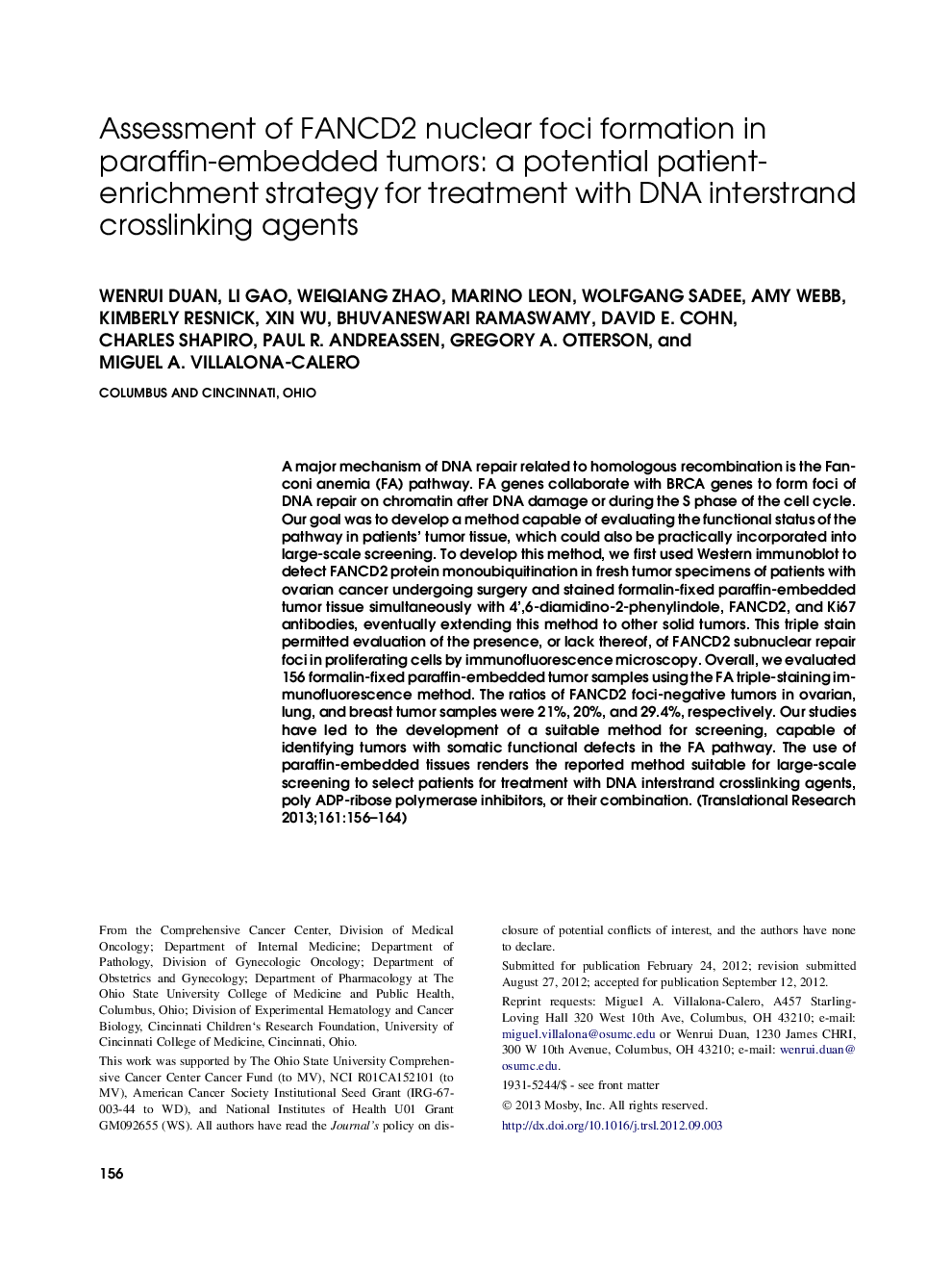| Article ID | Journal | Published Year | Pages | File Type |
|---|---|---|---|---|
| 3840403 | Translational Research | 2013 | 9 Pages |
A major mechanism of DNA repair related to homologous recombination is the Fanconi anemia (FA) pathway. FA genes collaborate with BRCA genes to form foci of DNA repair on chromatin after DNA damage or during the S phase of the cell cycle. Our goal was to develop a method capable of evaluating the functional status of the pathway in patients’ tumor tissue, which could also be practically incorporated into large-scale screening. To develop this method, we first used Western immunoblot to detect FANCD2 protein monoubiquitination in fresh tumor specimens of patients with ovarian cancer undergoing surgery and stained formalin-fixed paraffin-embedded tumor tissue simultaneously with 4’,6-diamidino-2-phenylindole, FANCD2, and Ki67 antibodies, eventually extending this method to other solid tumors. This triple stain permitted evaluation of the presence, or lack thereof, of FANCD2 subnuclear repair foci in proliferating cells by immunofluorescence microscopy. Overall, we evaluated 156 formalin-fixed paraffin-embedded tumor samples using the FA triple-staining immunofluorescence method. The ratios of FANCD2 foci-negative tumors in ovarian, lung, and breast tumor samples were 21%, 20%, and 29.4%, respectively. Our studies have led to the development of a suitable method for screening, capable of identifying tumors with somatic functional defects in the FA pathway. The use of paraffin-embedded tissues renders the reported method suitable for large-scale screening to select patients for treatment with DNA interstrand crosslinking agents, poly ADP-ribose polymerase inhibitors, or their combination.
